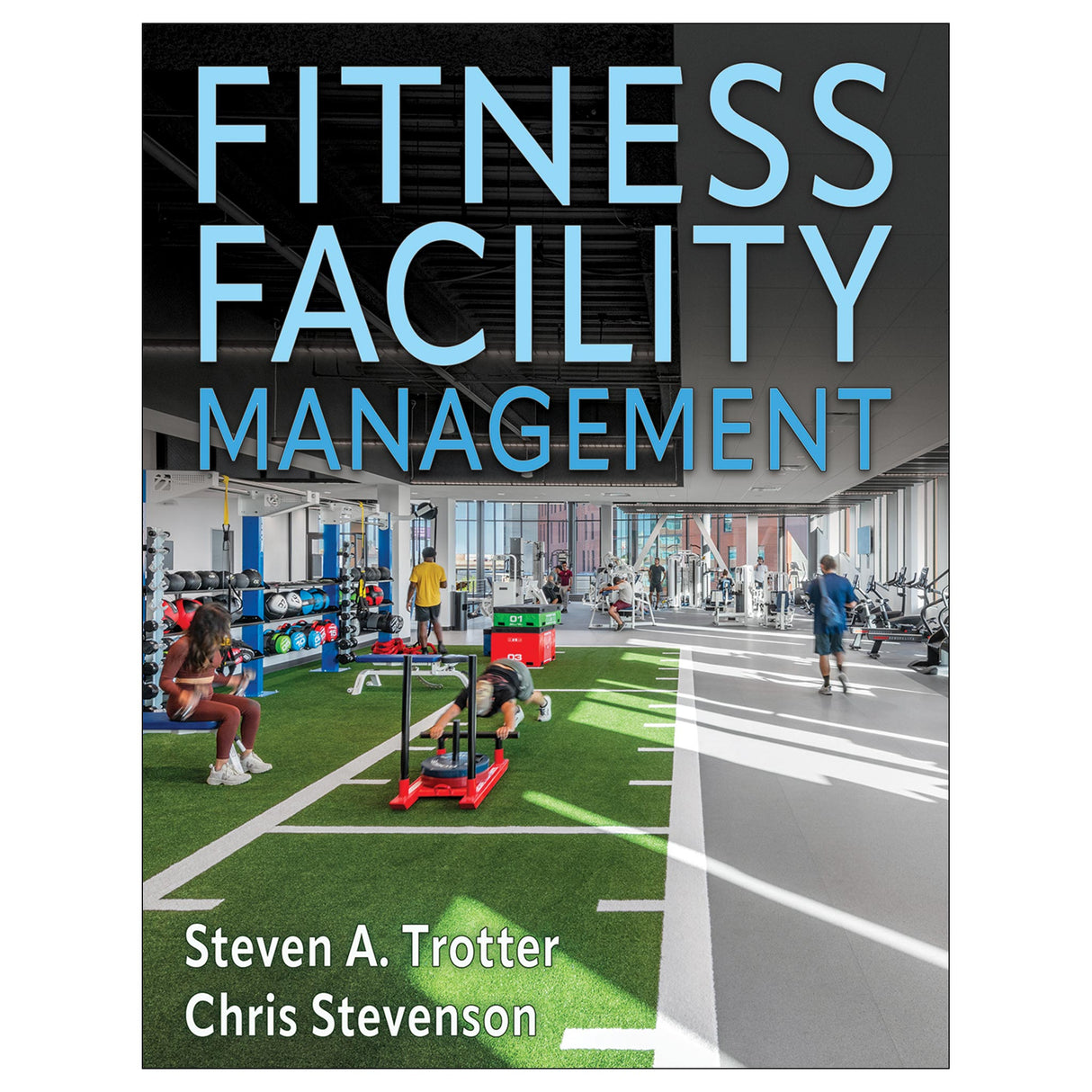Fitness Facility Management
Author: Steven A. Trotter, Chris Stevenson
$145.95 CAD
Using real-world expertise garnered from many types of fitness facilities, the authors and their contributors deliver practical insights and advice for the management and operation of health and fitness facilities, programs, and employees. Case studies and examples depict real-world scenarios encountered by modern health and fitness club managers. The latest guidelines and information on the skills needed to provide world-class experiences for members, guests, and clientele of many kinds make Fitness Facility Management the authoritative guide for current professionals as well as students studying for a future career in the industry.
Beginning with reflections on how the COVID-19 pandemic changed exercise habits, client behavior, and the fitness industry itself, readers progress to the fundamentals of organization development and business operations. They will learn about staff recruitment, hiring, and retention through employee engagement as well as the skills needed for talent offboarding and creating a positive employee exit experience. Coverage then moves to the operational management functions, such as facility design, standard operating procedures, equipment purchasing and maintenance, and development of member programs. The final section consists of the business practices needed for success, including attracting and retaining members, managing risk and preparing for emergencies, and optimizing profitability through business strategy and marketing plans.
Throughout the book, checklists and graphs provide easy-to-understand guidance on concepts. Think It Through elements at the end of each chapter present reflective questions for readers to consider, aiding with retention of key points and practical understanding of how to apply guidance and knowledge within fitness facilities.
The applied approach and practical information throughout Fitness Facility Management make this text the most up-to-date guide for current professionals—whether they work in boutique fitness centers, corporate fitness facilities, campus recreation centers, community recreation centers, or franchised fitness clubs—as well as for students preparing for a management career in the health and fitness industry.
Audience
Upper-level undergraduate students taking fitness management or related business courses; reference for gym managers and owners.Part I. Profile: Designing an Organization
Chapter 1. Current State of the Fitness Industry
Effect of the COVID-19 Pandemic on the Fitness Industry
Changes in the Industry
Exercise Habits and Behavior of Americans
Current Consumer Behavior
Chapter 2. Organizational Mission, Vision, and Values
Identify Core Values
Craft a Strong Mission Statement
Define Your Vision
Share What Guides You
Chapter 3. Identifying Your Target Market
Performing a Market Analysis
Performing a Competitive Analysis
Creating Buyer Personas
Chapter 4. Business Operations
Business Plans
Business Models
Financial Management 101
Budgeting and Forecasting
Part II. People: Building Rock Star Teams
Chapter 5. Recruiting, Hiring, and Onboarding Top Talent
Fitness Facility Positions
Recruiting
Hiring
Onboarding
Chapter 6. Engaging and Retaining Top Talent
Management Versus Leadership
Great Teams
Communication Plans
Meetings
Evaluating Employee Engagement
Gathering Employee Feedback
Rewards and Recognition
Performance Evaluations
Performance Improvement Plans
Chapter 7. Talent Offboarding
Types of Separation
Positive Exit Experiences
Part III. Products: Delivering World-Class Programs, Services, and Facilities
Chapter 8. Brick and Mortar Facilities
Types of Fitness Facilities
Building and Expanding Fitness Facilities
Standards and Guidelines for Designing Fitness Facilities
Front-of-House and Back-of-House Operations
Fitness Facility Signage
Standard Operating Procedures
Chapter 9. Fitness Equipment
Purchasing Versus Leasing
Types of Fitness Equipment
Cost and Quantity of Equipment
Equipment Layout
Caring for Your Equipment
Chapter 10. Member Services and Programs
Group Fitness
Personal Training
Health Coaching
Other Programming and Services
Part IV. Project Management and Profitability: Creating Systems for Success
Chapter 11. Attracting and Engaging Members
Sales Funnels
Behavior Change Models
Lead Generation
Membership Sales
Member Onboarding
Diversified Member Engagement
Member Offboarding
Chapter 12. Emergency Preparedness and Risk Management
Risk Identification
Risk Evaluation
Risk Management
Implementation of Risk Plans
Ongoing Evaluation
Chapter 13. Business Strategy and Marketing
Effectiveness and Efficiency
Technology in Fitness Facilities
Marketing Plans
Strategic Plans
Job positions at fitness facilities
Management Versus Leadership
All ancillaries are free to adopting instructors through HKPropel.
Instructor guide. Includes a suggested syllabus, chapter slide decks, in-class activities and case studies, and various templates.
Test package. Contains a bank of questions in true or false, fill-in-the-blank, essay and short-answer, and multiple-choice format. The files may be downloaded for integration with a learning management system or printed as paper-based tests. Instructors may also create their own customized quizzes or tests from the test bank questions to assign to students directly through HKPropel. Multiple-choice and true-false questions are automatically graded and student scores can be reviewed by instructors in the platform.
Chapter quizzes. Contains ready-made quizzes (9-10 questions each) to assess student comprehension of the most important concepts in each chapter. Each quiz may be downloaded or assigned to students directly through HKPropel. The chapter assessments are automatically graded and student scores can be reviewed by instructors in the platform.
Presentation package. Features PowerPoint slides of text, artwork, and tables from the book that can be used for class discussion and presentation. The slides in the presentation package can be used directly within PowerPoint or printed to make handouts for students. Instructors can easily add, modify, and rearrange the order of the slides.
Image bank. Includes most of the figures, content photos, and tables from the text, sorted by chapter. These can be used in developing a customized presentation based on specific course requirements.





